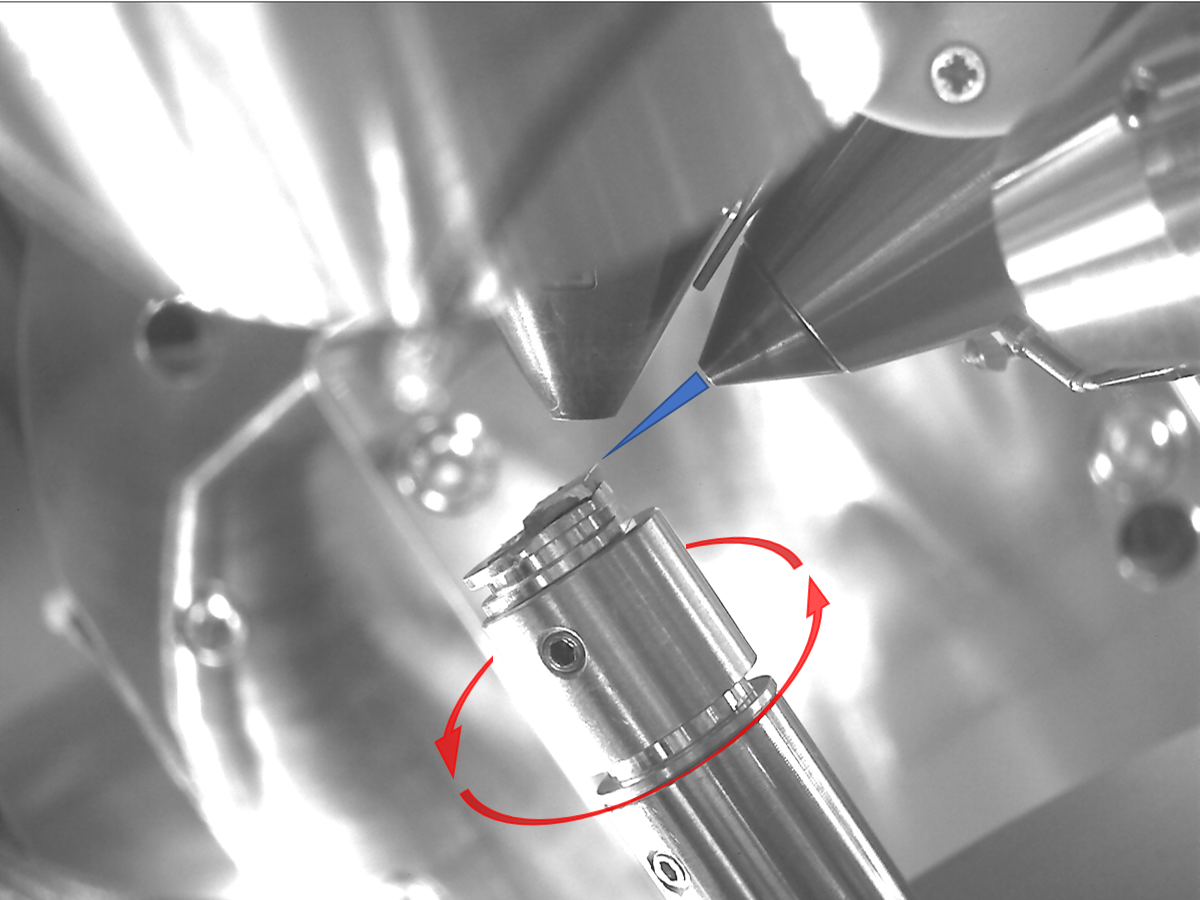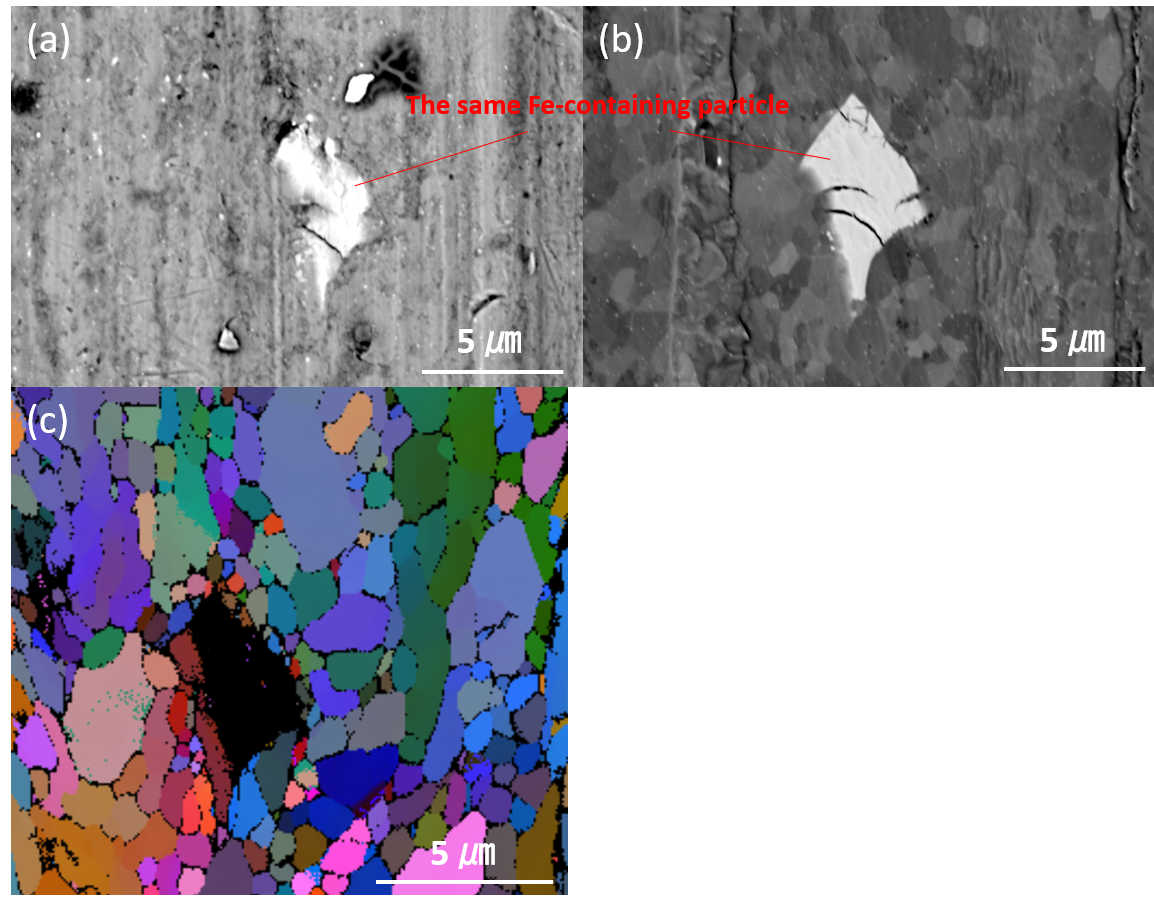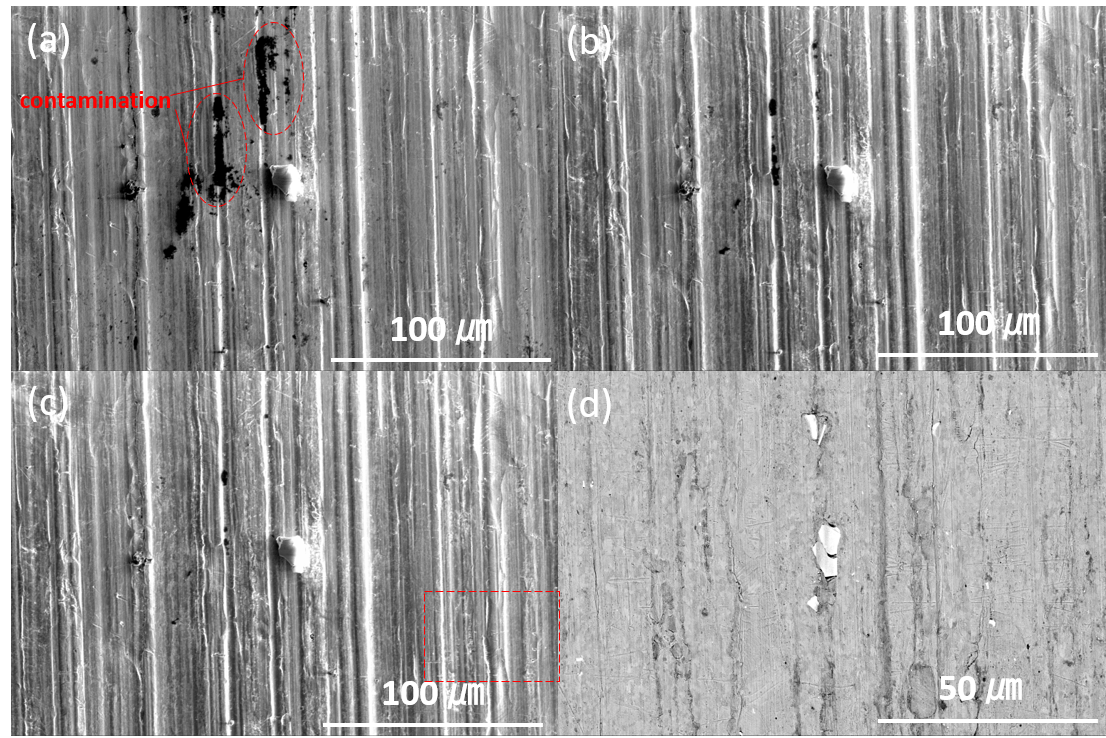Plasma FIB Spinmill for Al alloy Sample Preparation
- Abstract number
- 28
- Presentation Form
- Poster
- DOI
- 10.22443/rms.mmc2021.28
- Corresponding Email
- [email protected]
- Session
- Poster Session 3
- Authors
- Dr. Changrun CAI (1), Mr. Haifeng Gao (1), Dr. Yinghong Lin (1), Dr. Erwan Sourty (1), Mr. Cliff Bugge (3), Miss Xiangli Zhong (2)
- Affiliations
-
1. MSD, Thermo Fisher Scientific
2. The University of Manchester
3. Thermo Fisher Scientific
- Keywords
Plasma focus ion beam (PFIB); Spinmill; Sample preparation; EBSD; aluminium alloy; rolling surface; 3D/EBSD; volume characterisation
- Abstract text
In the present study, the low accelerating voltage Plasma Focused Ion Beam spinmill (PFIB-SM) [1–3] technique was applied for SEM-EBSD sample preparation, to replace traditional methods such as polishing and ion milling. The using of PFIB-SM made sample preparation simple, time-saving, high quality, site specific and accurate. Here we present the results of PFIB-SM procedure which was successfully applied to an as-received rolling aluminium alloy, AA6061. Applying PFIB-SM procedure at 8kV for 10 min, EBSD identification rate achieved over 95% for the alloy matrix in the periphery of a Fe particle at the rolling surface of the sample. Contamination removal was observed by 7 min PFib-SM at 2 kV. The promising low voltage applications on 3D volume microscopy is proposed for reducing high voltage ion beam damage on milled slice faces.
Preparation of high-quality samples is critical for material characterization. However, it is traditionally time consuming. An experienced researcher may spend days to prepare a high quality EBSD sample. Traditional methods, such as grinding, polishing and ion milling, may miss interested surface features, as they do not have precise position control at microscale level. In addition, the transfer from laboratory to microscope may induce contamination, damage or passivation/oxidation of sample surface, resulting in unreliable characterization results. The application of PFIB-SM could potentially solve these problems. From the aspect of aluminium alloy, the presence of Fe-containing intermetallic particles in the alloys may significantly influence the quality of surface finishing treatment, such as anodizing for corrosion protection [4–9]. However, the local grain structure in the periphery of Fe-containing intermetallic particles at rolling surface has not been characterized by EBSD, largely due to the limitation of sample preparation methods.
The PFIB-SM was performed by Xe+ ion beam scanning on a sample surface with 360°periodic stage rotation, in order to treat the sample homogenously and avoid the PFIB-SM inducing tomography changing, as shown in Figure 1. After 10 min of PFib-SM procedure at 8kV, the EBSD result from the spinmill achieved over 95% identification rate, and the grain orientation and small size grains (several hundred nanometers) were successfully characterized, as shown in Figure 2 (c). These microstructure features were kept intact with minimal removal of the materials by the in-situ SEM observation during PFIB-SM, as the comparison between Figure 2 (a) and (b). In addition, Figure 3 shows the high efficiency of 2 kV PFIB-SM for contamination cleaning. The evolution from Figure 3 (a) to (c) shows that most of contamination was removed and the microstructure was kept intact by 7 min of PFIB-SM procedure. Figure 3 (d) is the BSE micrograph of the rectangle Figure 3 (c) region, showing the clear overall microstructure features of the rolling surface.
In conclusion, the present work shows PFIB-SM is a promising sample preparation procedure for SEM-EBSD sample preparation. The micrographs of rolling surface AA6061 are given as the illustration of PFIB-SM application. In addition, it is reasonable to suggest that PFIB-SM also can increase the quality of pretreated sample and avoid the contamination during sample transfer from laboratory to microscope. It also has great potential to be used as 3D/EBSD sample preparation and analyzing method if the sample stage can be progressively raised up. Low voltage milling has great potential on minimizing high voltage induced sample surface damage.
Figure 1. The IR photograph of PFib-SM set up.
Figure 2. (a): the SEM CBS A+B 5kV 1.6 nA micrograph of an Fe-containing particle before 8 kV PFib-SM; (b) the SEM CBS A+B 5kV 1.6 nA micrograph of the same Fe-containing particle after 10 min 8kV PFib-SM and (c): the corresponding EBSD All Euler of alloy matrix in the periphery of the particle in (b).
Figure 3. (a): the SEM ETD-SE 5kV 1.6 nA micrograph of the as-received rolling surface before 2kV PFib-SM; (b): SEM ETD-SE 5kV 1.6 nA micrograph of the as-received rolling surface after 5 min 2kV PFib-SM; (c): SEM ETD-SE 5kV 1.6 nA micrograph of the as-received rolling surface after 7 min 2kV PFib-SM and (d): the SEM CBS A+B 5kV 1.6 nA micrograph of the as-received rolling surface after 7 min 2kV PFib-SM, showing clear surface structure.
- References
[1] Winiarski B. Plasma FIB Spin Milling Accelerates Battery Research. Microsc Microanal 2020;26:2226–7. https://doi.org/10.1017/S1431927620020863.
[2] Winiarski B, Rue C, Withers PJ. Plasma FIB Spin Milling for 3D Residual Stress Measurements. Microsc Microanal 2019;25:882–3. https://doi.org/10.1017/s1431927619005142.
[3] Winiarski B, Rue C, Withers PJ. Plasma FIB Spin Milling for Large Volume Serial Sectioning Tomography. Microsc Microanal 2019;25:350–1. https://doi.org/10.1017/s1431927619002484.
[4] Saenz de Miera M, Curioni M, Skeldon P, Thompson GE. The behaviour of second phase particles during anodizing of aluminium alloys. Corros Sci 2010;52:2489–97. https://doi.org/10.1016/j.corsci.2010.03.029.
[5] Ma Y, Zhou X, Thompson GE, Curioni M, Zhong X, Koroleva E, et al. Discontinuities in the porous anodic film formed on AA2099-T8 aluminium alloy. Corros Sci 2011;53:4141–51. https://doi.org/10.1016/j.corsci.2011.08.023.
[6] Veys-Renaux D, Chahboun N, Rocca E. Anodizing of multiphase aluminium alloys in sulfuric acid: in-situ electrochemical behaviour and oxide properties. Electrochim Acta 2016;211:1056–65. https://doi.org/10.1016/j.electacta.2016.06.131.
[7] Wu H, Ma Y, Huang W, Zhou X, Li K, Liao Y, et al. Effect of Iron-Containing Intermetallic Particles on Film Structure and Corrosion Resistance of Anodized AA2099 Alloy. J Electrochem Soc 2018;165:C573–81. https://doi.org/10.1149/2.1361809jes.
[8] Zhang F, Nilsson J-O, Pan J. In Situ and Operando AFM and EIS Studies of Anodization of Al 6060: Influence of Intermetallic Particles. J Electrochem Soc 2016;163:C609–18. https://doi.org/10.1149/2.0061610jes.
[9] Jin Z, Cai C, Hashimoto T, Yuan Y, Kang DH, Hunter J, et al. The behaviour of iron-containing intermetallic particles in aluminium alloys in alkaline solution. Corros Sci 2021;179:109134. https://doi.org/10.1016/j.corsci.2020.109134.



